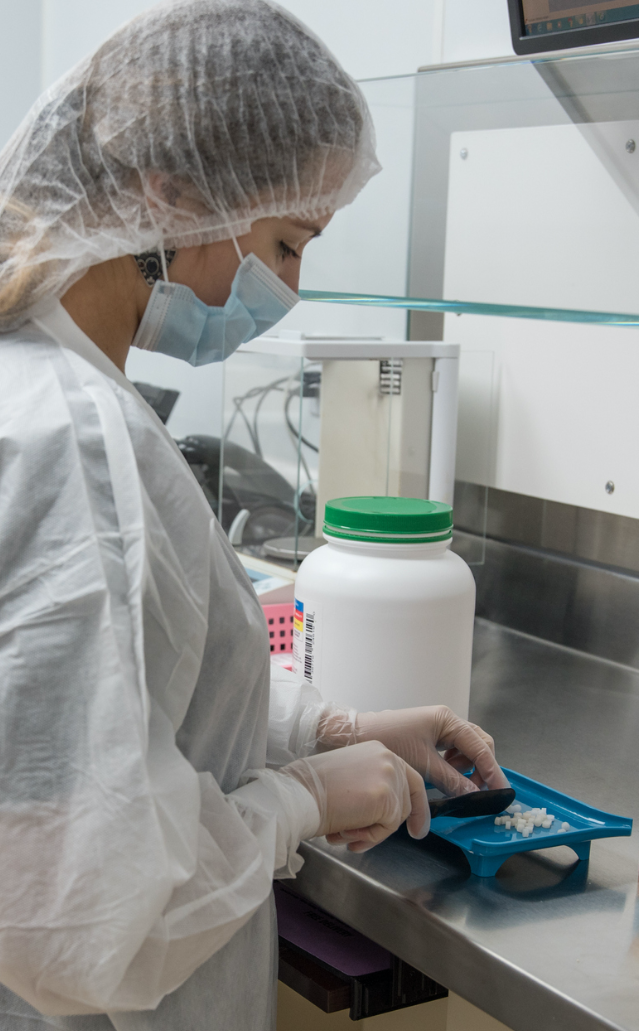However, to experience the best possible treatment outcome, you must take the medication as directed—in the correct dosage, at the right time of day, and for the number of days specified.
- Sublingual Drug Administration
- Oral Drug Drawbacks
- Advantages of Sublingual Meds
- 5 Need to Know Facts
- Types of Drugs in Sublingual Form
This post was originally posted June 5, 2017 and has been updated with current information and facts.
Issues with taking medications as directed—known as patient compliance or patient adherence issues—can result in serious, sometimes fatal, complications. However, as many as 50% of patients fail to adhere to the dosage or frequency instructions that accompany their medications. Most don’t do so with some innate desire to become non-compliant; instead, many people experience difficulties taking oral medications or swallowing altogether—a condition known as dysphagia. If these situations sound familiar, sublingual medications may be a good solution for you.
What is Sublingual Drug Administration?
Although sublingual drugs often come in a tablet form that appears like their oral counterparts, they are not swallowed in the same manner as oral medications. The term “sublingual” comes from the Latin prefix “sub,” meaning “under” and the root word “lingual,” meaning “tongue.” Thus, sublingual administration is a form of drug administration that takes place under the tongue.
Compounding pharmacies can work with you or your physician to custom formulate many medications in sublingual form, so you aren’t required to swallow them—making medication adherence simpler than ever before. As mentioned, medicines that lend themselves well to sublingual administration can provide a desirable alternative to the more common, oral forms of the same medicines. This brief guide to sublingual tablets will offer more information about the oral medication issues commonly experienced by patients, the benefits sublingual medicines present to solve them, types of sublinguals available, best steps for taking a sublingual drug, and which medications can be taken sublingually.
Oral Medications Have Significant Drawbacks
Traditional oral medications involve swallowing a pill or tablet, which is then digested and absorbed through the lining of the gastrointestinal system and into the smallest blood vessels of the circulatory system that reside there—minuscule capillaries that work to absorb nutrients and oxygen from the foods you eat. The medication spreads throughout the system via the circulatory system’s full network of blood vessels. In essence, to work correctly, the medicine must be able to withstand the highly acidic environment within the stomach, pass through the cells lining the intestines, and resist filtration or elimination by the liver before reaching the rest of the body.
Many medications do not withstand these harsh environments well, thereby reducing their efficacy even if taken properly. Also, the effectiveness or potency of some oral medications can be negatively affected by other food and medicines in the stomach. When combined with the long wait times necessary for absorption as well as these potency and efficacy issues, pill aversion can worsen issues already present with some oral medications.
Advantages of Compounding Sublingual Medications
Due to their sublingual administration, sublingual drugs present several advantages over the traditional formulations of the same medications. Advantages include:
-
- Quick absorption. Instead of needing to undergo chewing, swallowing, digestion, and absorption via the gastrointestinal system before entry into the bloodstream like oral medications, sublingual versions are placed under the tongue. There, they dissolve rapidly on the mucous membranes beneath the tongue and enter directly into the tiny blood vessels beneath. Via these capillaries, sublingual drugs can enter the bloodstream much more quickly than oral medications.
- Predictable potency. Oral medications often decrease in potency after exposure to stomach acids and liver filtrations. By contrast, sublingual tablets dispense the full amount of medication directly into the bloodstream without experiencing liver metabolism. As a result, physicians can prescribe smaller dosages that are guaranteed to reach their intended target.
- Reduced interaction with other medications and foods. Because a sublingual dose of medicine is administered and absorbed under the tongue, it bypasses the stomach and its contents on its way to the bloodstream. As a result, sublingual drugs do not interact with foods and other medications before absorption. The dosage does not cause or experience interference by other medications and does not cause the gastrointestinal irritation of some oral medications.
- Ease of administration. Individuals who have trouble swallowing or have pill aversions sometimes avoid taking medications due to the stress caused by oral medications. Sublingual versions of the same medicines can make taking prescription medications much easier, as the tablet does not need to be swallowed. Similarly, sublingual tablets are ideal for administration in patients who are unconscious and cannot swallow.
What Should I Know About Sublingual Drugs?
Follow these steps for sublingual administration success:
1. Drink water before administration.
Drink plenty of water 10 to 15 minutes before placing a sublingual tablet. This step ensures you produce an adequate amount of saliva necessary to dissolve the tablet.

2. Place the tablet in the correct area of your mouth.
When it’s time to place the tablet, determine whether the pharmacist’s instructions include sublingual or buccal (cheek) placement. For sublingual administration, place the tablet under your tongue and wait until it dissolves. For buccal administration, place the tablet between your cheek and your gums.
3. Avoid washing away the medication.
After the tablet has dissolved, avoid eating or drinking for at least 30 to 45 minutes. Food and liquid can wash away a portion of your dose and result in weakened effects or the return of your symptoms.
4. Avoid interfering with absorption.
Do not brush your teeth immediately before or after you place your medication. Also, do not smoke or use chewing tobacco for two hours before and after taking your medication. Both activities can prevent the mucous membranes in your mouth from properly absorbing the medication.
5. Learn what to do if you forget to take your medication.
While many drugs can be taken within a one- or two-hour window if you forget to take a dose, others should adhere to a stricter schedule. Call your pharmacist if you’ve forgotten to take your medication to determine specific instructions for your dosage and medication.
What Medications Are Available for Sublingual Use?
If you have a pill aversion, have difficulty swallowing, or experience any of the other issues mentioned with your traditional oral medication, sublingual forms can be an ideal solution. Unfortunately, not all medications come in ready-made sublingual tablets. However, a compounding pharmacy can compound many medications into sublingual forms.
Most medications can be compounded in this way. Drugs like testosterone, zolmitriptan (Zomig), estradiol, and especially nitroglycerine tablets—which dissolve under the tongue in the event of sudden angina or heart attack—can all benefit from sublingual forms. Depending on the type and nature of the medication, a compounding pharmacy can find the ideal sublingual form for your needs, including:
- Tablets—shaped like traditional oral medications, tablets are often delivered in pill bottles or blister packs. Tablets are placed under the tongue and convenient for administration at any time or place.
- Films—some medications can be transformed into a thin, paper, or rubber-like film. The film is dissolved on the tongue for quick delivery of the medication.
- Sprays—medications that come in spray forms are sprayed onto the surface of the cheek or tongue. In many cases, sprays allow for more rapid absorption as they are spread across a larger surface area of the mouth.
- Liquids—while many medications are available as liquids, sublingual liquids are designed in special formulations for administration beneath the tongue. In addition, some are developed to allow for speedier absorption than traditional liquid medications.
Follow here if you’d like information on High Potency Resveratrol

Compounding Sublingual Medications from a Trusted Pharmacy
Compounding your medications into sublingual medications can solve your administration, dosage, interaction, and gastrointestinal irritation problems. However, it’s essential to speak with a skilled compounding pharmacist to determine which form works best for you and your medications.
At The Compounding Pharmacy of America, we can customize your medications according to strength, dosage, flavor, and form. We can even remove undesirable inactive ingredients from prescriptions, such as gluten and lactose.
Contact us today for custom medications that deliver the best possible treatment outcome for you.
Chief Operating Officer, The Compounding Pharmacy of America
Matthew Poteet, Pharm.D. graduated with Honors from Lee University with a Bachelors of Science in Biological Science. After his undergraduate training, he completed the Doctor of Pharmacy program at Mercer University Southern School of Pharmacy, graduating in 2004. Dr. Poteet has spent much of his pharmacy career on staff at two of the most prestigious academic teaching hospitals in the Southeast; Emory University in Atlanta and Vanderbilt University Medical Center in Nashville. At these institutions he received extensive experience and training in sterile products compounding.
He returned home to East Tennessee in 2010, where he has held the position of Pharmacy Director at two sterile products pharmacies in Knoxville. Matthew lives in Knoxville with his wife, Chris. Dr. Poteet is Tennessee’s first Board Certified Anti-Aging Pharmacist by the American Academy of Anti-Aging Medicine.


 Subscribe to Our Newsletter
Subscribe to Our Newsletter


